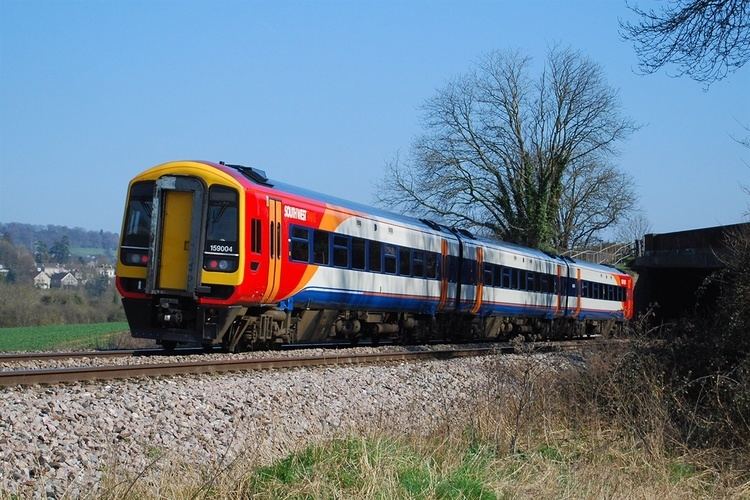Operator(s) South West Trains | Status Operational | |
 | ||
Type Suburban rail, Heavy rail Track gauge 1,435 mm (4 ft 8 ⁄2 in) standard gauge Rolling stocks | ||
The West of England line (sometimes known as West of England main line) is a British railway line from Basingstoke, Hampshire, to Exeter St Davids in Devon, England. Passenger services run between London Waterloo station and Exeter. Despite its historic title, it is not today's principal route from London to the West of England: Exeter and everywhere further west is reached more quickly by Great Western Railway services from London Paddington. At Salisbury, the line intersects with the Wessex Main Line.
Contents
History
When all sections had been incorporated into the London and South Western Railway, they consisted of the following:
The line was downgraded by being singled for long sections west of Salisbury by British Rail. This restricts the number of trains on this section, but passing loops have been added to alleviate this problem.
Beyond Exeter, the line continued to Plymouth via Okehampton and Tavistock as the Exeter to Plymouth railway of the LSWR. This line is now partly closed, with the surviving sections downgraded to branch lines. The section from Exeter to Coleford Junction, near Yeoford, is still in existence as part of the Tarka Line (which continues to Barnstaple). The Dartmoor Railway still exists as a heritage line and industrial line from Coleford Junction to Okehampton, where the track breaks. Tavistock lacks a rail connection, and the final section of the original main line, from Bere Alston, continues to Plymouth as part of the Tamar Valley Line.
Route
Trains between London Waterloo and Exeter run on the South Western Main Line as far as Basingstoke. The West of England Line diverges from this line at Worting Junction, a short distance west of Basingstoke.
Network Rail splits the line into two sections: the first section from the line's start at Worting Junction (near Basingstoke) to Wilton Junction (near Salisbury) is classified as "London & SE commuter"; the section from Wilton Junction to Exeter is a "Secondary" route. The secondary route west of Salisbury is predominantly single track, but has three sections of double track and also passing loops. The double-track sections and passing loops are Exeter to Pinhoe, a loop at Honiton station, 3 miles of double track centred on Axminster, a loop at the former Chard Junction station, Yeovil Junction to Templecombe, a loop at Gillingham station, and a final loop just outside Tisbury station.
The line's speed limit is mainly 80–90 mph over its whole length from Basingstoke to Exeter. Speed is further limited around the junctions. The first section to Wilton Junction has a listed line speed of 50–90 mph, and the secondary section to Exeter has a line speed of mainly 85 mph with parts at 70 mph.
Current operations
Passenger services are currently operated by South West Trains using Class 159 and Class 158 trains. They generally run half-hourly from London to Salisbury and hourly to Exeter, calling at Clapham Junction and/or Woking and then most stations between Basingstoke and Exeter St Davids although some smaller stations east of Salisbury and near Exeter have a reduced service.
The Network Rail South West Main Line Route Utilisation Strategy (March 2006) recommended building an extended section of double track from Chard Junction to Axminster, plus a passing loop at Whimple. However, Network Rail's Route Plan, is silent on the Whimple loop. The Axminster Loop is centred on Axminster station, and does not extend to Chard Junction as originally proposed. The line between Basingstoke, Salisbury and Exeter is not electrified.
